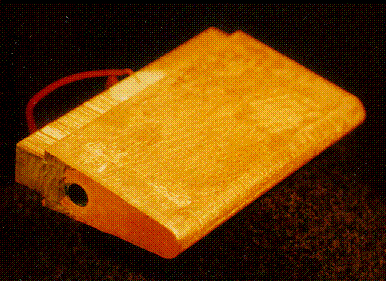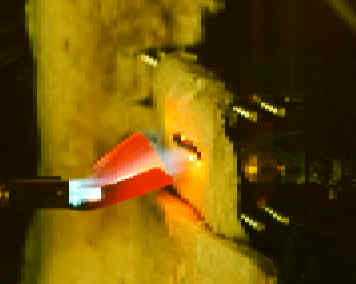
Products
R&D
- Integrated Fuel-Air HX for Turbine Engines
- Cryo HX w/Anisotropic Conductance
- Advanced Turbine Blade Cooling
- Small Rocket Motors
Services
Convection-Cooled Leading Edge for Hypersonic Vehicles (3rd Generation)
 | 3rd Generation Prototype, Entirely Convectively Cooled |
In 1995 Micro Cooling Concepts' employees completed a contract to develop a prototype leading edge for a generic hypersonic vehicle. This leading edge represented the third generation of their leading edge designs, and the first leading edge that was completely internally cooled. The program served as a foundation for fourth generation leading edges subsequently sponsored by USAF/WL and NASA/Langley. The third generation development effort is described below.
Problem
-
Hypersonic Vehicle Leading Edges are Exposed to Severe Heating Environments
- Steady-State Heating Up to 3.5 kW/cm**2
- Transient (Shock-on-Lip) Heating > 35 kW/cm**2
- Active Cooling Required; Transpiration/Film Cooling Undesirable
-
Hydrogen-Based Cooling Systems are Limited in Capability
- Hydrogen Fuel is Only Available Coolant
- Hydrogen has Poor Heat Transfer Properties
Accomplishments
-
Successfully Fabricated Glidcop Leading Edge Prototype
- Model Was 5 cm in Span, w/0.25 cm Nose Radius and 6 Degree Wedge Half-Angle
- Model Incorporated 3500 Microchannel Cooling Circuits
- Each Microchannel was 50 microns x 500 microns in Cross-section
-
Bench Tested Protoype Model
- Torch Tests Show Excellent Flow and Heat Transfer Performance
- Test Results Closely Match Predictions

Unique Capabilities
- Low Pumping Powers Required
- High-Strength, Hydrogen-Compatible Construction